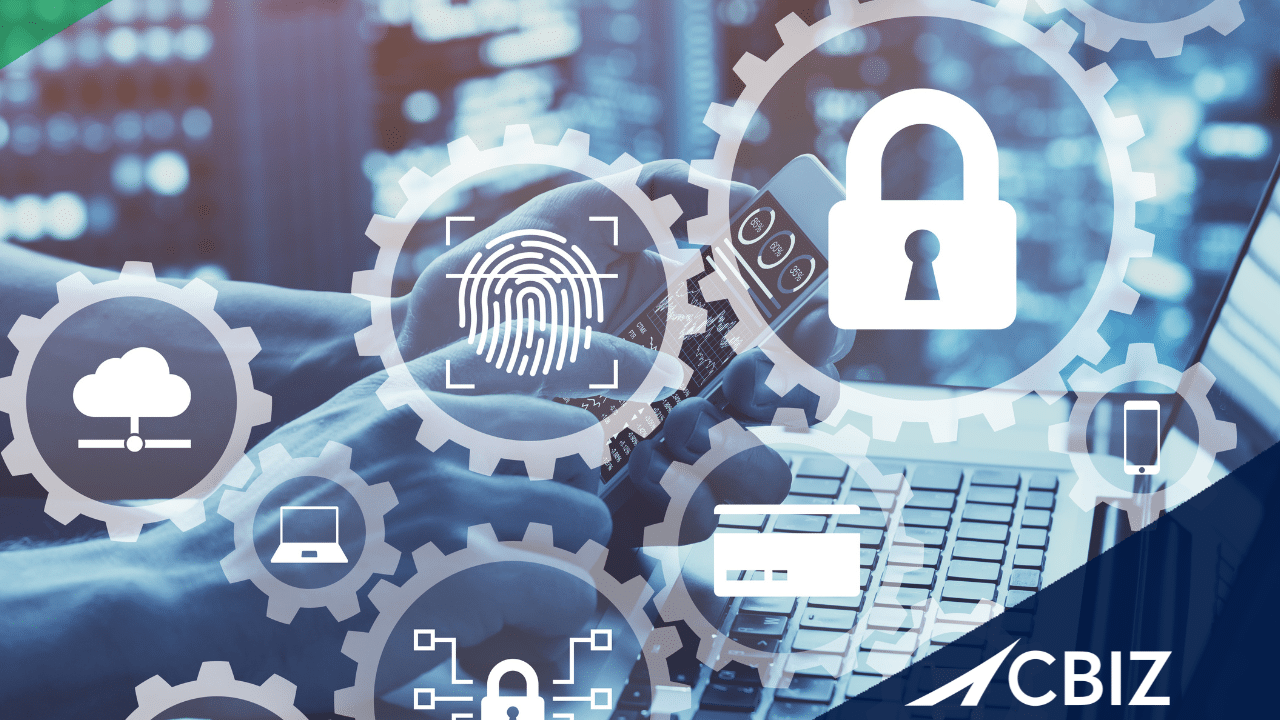
Cyber threats have become more sophisticated and widespread, targeting businesses of all sizes across various industries. These threats can range from ransomware attacks that can cripple operations, to data breaches that can lead to the compromise of sensitive customer information. In such a landscape, traditional security measures are no longer sufficient and practicing good cybersecurity hygiene is more critical than ever. To effectively combat these threats, businesses need a proactive approach that involves the use of security products designed to address specific vulnerabilities. Below we will explore the security products you should be implementing today and the pivotal role they play in protecting your business.
Why Do You Need Security Products?
In a world where our dependence on technology grows daily, maintaining effective cybersecurity hygiene is not just a best practice – it’s a critical necessity. Security products encompass a wide range of tools and technologies, from antivirus software and endpoint security solutions to end-user training and email security software. These products provide essential layers of defense against evolving cyber threats, helping to protect sensitive data and critical systems.
Implementing security products not only reduces the risk of cyber incidents but also enhances a business’s eligibility for cybersecurity insurance. Insurance providers assess the security posture of a business before offering coverage. Businesses that have invested in security products and best practices are more likely to be deemed lower-risk and, consequently, are more attractive to insurers.
Furthermore, having security products in place can result in substantial long-term cost savings. While there is an initial investment required to acquire and implement these tools, the potential financial losses and reputation damage from a cyberattack far outweigh the upfront costs. These products play a vital role in mitigating security risks and improving your overall security posture and cybersecurity hygiene:
1. Multi-Factor Authentication
MFA is the must have, do-not-pass-go-without-it security tool. Passwords get compromised – it is that simple. Authentication must rely on a combination of the following factors: Something you know such as a password, something you have such as a cell phone, and something you are such as a fingerprint.
A common deployment is taking something you know as the first factor with something you have as the second factor. Put simply, a password and an MFA application on your cell phone. Initially, these second factor notifications included SMS text notifications or One-Time Passcodes (OTP). Now, as MFA attacks are evolving, strategies like number matching are adding complexity to the second factor.
Without MFA, organizations are susceptible to compromise that very often leads to productivity loss and a direct hit to earnings. If you do not have MFA implemented for your organization today, contact CompuData so we can help you get protected now.
2. Endpoint Detection and Response
Why is EDR (Endpoint Detection and Response) necessary? Let us first provide the formal definition: an endpoint is any physical device that connects to a network system. That is a bit broad – we can do better. Endpoints are assets like PCs, mobile devices, and servers that all share a common network. They love to interact with one another and share information. Most of the time, that is the desired function but sometimes sharing is not caring.
Remember how we said devices constantly interact? PCs talk to PCs, they talk to servers, the internet, applications, and many other sources. If one of those sources is compromised, it can impact some or all devices in that shared ecosystem. This is why EDR is necessary.
EDR in tandem with Next-Generation Antivirus (NGAV) services protect endpoints using modern technology in the form of behavioral analyses, machine learning algorithms, and artificial intelligence. Putting the jargon aside, what this equates to is shifting your security posture from one of being reactive to instead being proactive. EDR and NAGV are effective hunters always seeking anomlies in an endpoints behavior and stopping suspicious patterns often well before a user realizes something was wrong.
If you are thinking, “Well, AV has always slowed things down.” Do not fret – this is not your old school, resource intensive utility. EDR and NAGV are optimized to reduce performance impact, cast a wider and more efficient net of security over endpoints, and make sure malicious actors are stopped before there is a quantifiable impact to the business.
3. Endpoint Monitoring and Patching
It is evident with our review of EDR how critical endpoint protection is to an organization. Another component to this concept is monitoring and patching. Organizations have a lot of devices – we mean a LOT. It would be a near impossible task to manually monitor, maintain, and update these devices without a tool.
Endpoint monitoring and patching fills that need. Often deployed with an agent-based rollout, these services are automated to run silently behind the scenes making sure that the system state is healthy, components like memory or storage are not failing, and that the system has the latest security and feature updates from the operating system vendor.
Added benefits include:
Asset Reporting – allowing organizations to have visibility into hardware lifecycles, performance issues, security problems, and other key insights.
Application and Service Deployment – Use the agent to deploy business applications or tools across all endpoints eliminating the need to go PC-to-PC to get things installed.
Endpoint monitoring and patching goes in tandem with EDR and are often bundled together as part of a security package. You would not want to have one without the other!
4. Email Filtering and Security
As you are reading this, we bet your phone buzzed once or twice with a new email. (You need to like and share this article if it happened!) Email is a cornerstone of business communication, but it is also a major attack vector for organizations. A report from Harmony Email & Collaboration by Checkpoint indicates that “over 90% of attacks against organizations start from a malicious email and 75% of ransomware attacks are email-borne.” This should get your attention.
Email protection is not just a nice-to-have solution. It is not cliché to say it is necessity. Like with web-filtering, a good email security service offers link protection. Malicious actors are mimicking Microsoft, Google, and other vendors that we use daily for email, documentation, and other services. These are legitimate-looking emails that can trick a user into handing over keys to their accounts.
Key services to consider in your email security suite include:
Link Protection – Identifies malicious sites and prevents access when a link is clicked inside an email.
Anti-Phishing – Mitigate the mimics from getting to your team’s inbox at all.
Anti-Malware – Attachment scanning that prevents the receipt of email with known malicious files or file types.
Reporting – Scheduled reports to staff to see what has been blocked and/or quarantined to ensure that good emails are coming, and bad emails are being kept out.
Avoid being a part of the statistics and review your email protection plan. As with EDR and Web Filtering, this service protects your most important lines of defense: Users and Endpoints
5. Email Backup and Recovery
As a supplement to email security, having a backup and disaster recovery solution for email helps mitigate human and administrative errors that can result in critical correspondence being deleted.
Things to consider when reviewing an email backup solution:
Data Protection Scope – Ensure that the entire ecosystem where email and other correspondence live can be backed up. With Microsoft 365, examples include Exchange, Teams, and SharePoint Online.
Automation – Pursue a service that offers automated backups and automated backup enrollment. Any time a new user starts, a new site is created, or a new Team is built, the process to protect those resources should be automatic.
Recovery – The process to recover data should be smooth and give the ability to be granular. This means you have point-in-time options to select specific dates and times where the data may have been before deletion.
Email backup and recovery adds another layer of protection to one of the communication cornerstones in any organization.
6. Web Filtering
Is it still cool to say, “surf the web?” We did not think so, but web traffic makes up a substantial amount of overall network traffic given the “online” nature of most tools and resources. Malicious actors are getting better every day at spoofing – or mimicking – many common websites to trick people into downloading infected files or giving up sensitive information.
Web filtering to the rescue! Filtering solutions act as the security guard protecting you from the dangers of the world-wide web. A reliable web filtering solution will offer some of the following services:
DNS Security – Blocking access to malicious sites and defining content controls to filter out unwanted site categories.
Threat Intelligence – Constantly updating lists of known malicious IP addresses and websites to improve content filtering, malicious site filters, and restrict other harmful sites.
Mobility – A tool that moves with your user population and provides protection regardless of if they are at the office, at a client site, or in a public place.
While it may no longer be part of the vernacular, surfing the web is still a top activity. Consider a filtering solution that keeps your team away from malicious actors and harmful sites.
7. Security Awareness Training and Attack Simulation
An organization’s first line of defense is its people. Plain and simple. It is imperative and, according to many insurance firms, necessary to provide security training for your organization. You may be asking, “What will we need? What should we pursue?” Great questions – here are a few features you will want in a security training platform:
Security Training and Education – A learning management system to train on and track security and awareness course that bolsters knowledge of the staff on what to look out for with regards to cyber threats.
Simulated Attacks – Validate that learning is sinking in with simulated phishing attacks that highlight susceptibility and where further training may be needed.
Gamification of Education – Make learning fun and use it as a form of light internal contest to encourage participation and better training.
Reporting and Compliance – Understand the organization’s security posture and where it may be important to focus more attention on further training.
Empower your organization to be security minded. Do not rely solely on tools such as MFA, EDR, Web Filtering, Email Filtering, or backups. No system is perfect, and human error can undo that arduous work implementing the other services.
Find a program and educate, educate, educate!
Working with the Right IT Partner
By investing in the above security products and adopting a proactive cybersecurity stance, you not only safeguard your business but also demonstrate a commitment to protecting your customers and their data. Working with a trusted IT partner who has a focus on security can help mitigate potential risk and improve security throughout your business.
CompuData can work with your business to provide a security hygiene assessment to your current environment and make strategic, proactive recommendations to enhance your security posture. Our team of experts can help implement the proper security tools to meet your requirements and protect your business.
To learn more about how CompuData can help enhance security hygiene with proactive solutions, email us!


